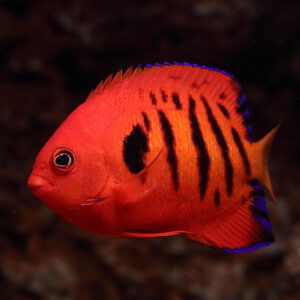Darwin Clownfish are absolutely stunning variants of ocellaris clowns. These elegant looking fish have black bodies instead of the typical orange colour most people think of when considering clownfish. As a result, this colour contrast beautifully accentuates their broad white bands. Darwin Clowns make nice additions to marine aquariums. They are perfect for someone after something special and are ideal starter fish.
Darwin Clownfish Ecology.
Clownfish form strict hierarchies, in which, the dominant fish is female. In the absence of a matriarch, a larger male clown will change gender and also become the new boss. When it is time to lay eggs, the breeding pair will clear an oval shaped space for brood to go. The male Darwin Clownfish take up the job of guarding and fanning the eggs. Success of the brood depends on how attentive the subordinate males were.
Famously, Clownfish share a symbiotic relationship with anemones. The Anemones offer the Darwin Clowns protection against predators. This is so, because anemones have stinging cells called nematocysts. Clownfish have protective mucus coats, which prevents the host from stinging them. In return, the Darwin Clownfish brings in food and keep the Anemone free from parasites.
Clownfish are omnivorous, they will eat some algae and small meaty foods such as zooplankton or larvae.
Clownfish: In the Aquarium.
Darwin Clownfish do best when fed a varied diet. They will accept frozen Mysis shrimp and enriched frozen brine shrimp. They will also devour live foods, such as copepods and amphipods, that can be cultivated in attached refugium. Over time they will accept high-quality pellet and flake. We adapt all our Darwin Clownfish to aquarium life before they leave us. We focus on their health, and most are eating a good quality flake food and/or pellet, such as JBL Maris, before being offered for sale.





Reviews
There are no reviews yet.